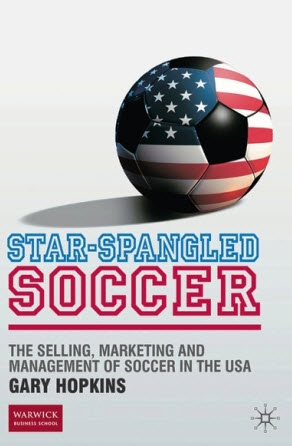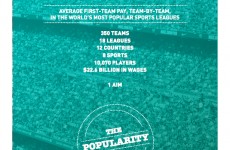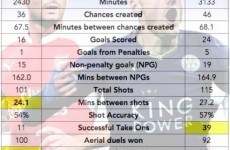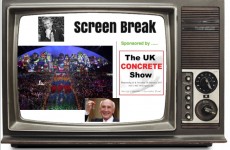- 0
By Gary Hopkins
2 June 2010
.
The occasion was the ‘Boston Soccer Party’ of 1993, otherwise known as the second fixture in the US Cup, a four-nation international tournament hosted by the US Soccer Federation and featuring the USA, Brazil, England and Germany. This particular match featured the USA against England on 9 June at Foxboro Stadium. Tom Dooley put the Americans ahead in the first half to set up hopes of (another) dream victory. And then . . .
Well, they say that goals change games and Alexi Lalas’s soaring header in the 72nd minute to put the game beyond the reach of the English certainly finished this one off. As he ran to the touchline, his crazy hair billowing in the wind, I wondered if it was to hug his fellow players or ask his accountant if his $250 substitute’s appearance fee ($150 after tax) would come as a cheque or in cash. Either way, it would barely be enough to pay for a re-string of one of his precious guitars. But hey, as Mastercard would say: “Beating England: $150. Scoring the goal that made headline news around the world: Priceless.”
Lalas’s goal was indeed priceless, instilling confidence in the American team and indeed the USA as a whole. It let the world know that America might just be catching on to this game and that the American team might just shock everyone at the forthcoming ’94 World Cup. Three and half million ticket sales later, after qualification from their group and a narrow 4 July loss to Brazil (in the round of 16) in front of 84,000 fans and 13m television viewers, they had pretty much done that, proving it’s never wise to underestimate the Americans. That tournament was also enough to change the trajectory of soccer in the USA forever.
Poorly paid but highly motivated; such was the lot and plight of American soccer players in the early 90s. Yet in 2010, should the USA win the World Cup in South Africa, the players will share a staggering bonus pot of more than $20m, an unimaginable amount in 1990 when a near bankrupt US Soccer Federation – which had somehow convinced Fifa it could host a World Cup – would have bounced such a cheque all the way down Wall Street and back up Broadway!
The truth today, however, is that the USSF could write that $20m cheque out of its own reserves, twice over, and still have change! Massive support from Nike, growing fees from membership, licence fees from international games and a cadre of strong sponsors, all allied to big games against their arch rivals Mexico are enough to swell the coffers. It’s one legacy of World Cup ’94 – a wealthy Federation. But what about the players?
 A sum as massive as $20m is big enough to resonate everywhere; it would excite any team landing in South Africa. But there is still a “sting in the tail” and one that will inevitably cause heated discussion the next time the players and the USSF convene around a negotiating table. Because for the US players, there’s no such thing as a guaranteed million bucks apiece, or anything like it. The difference between going home from South Africa to a new Ferrari rather than a Ford Focus will lie in their ability to upset England, turn over Algeria, send Slovenia packing, and then brush aside Spain, Italy, Brazil and / or others from the upper echelons to lift the World Cup. The rewards for glory will be massive not just in kudos but hard cash. The rewards for less stellar achievement will be something less than a pro rata share of the spoils.
A sum as massive as $20m is big enough to resonate everywhere; it would excite any team landing in South Africa. But there is still a “sting in the tail” and one that will inevitably cause heated discussion the next time the players and the USSF convene around a negotiating table. Because for the US players, there’s no such thing as a guaranteed million bucks apiece, or anything like it. The difference between going home from South Africa to a new Ferrari rather than a Ford Focus will lie in their ability to upset England, turn over Algeria, send Slovenia packing, and then brush aside Spain, Italy, Brazil and / or others from the upper echelons to lift the World Cup. The rewards for glory will be massive not just in kudos but hard cash. The rewards for less stellar achievement will be something less than a pro rata share of the spoils.
The reality to an American soccer player is that, unlike their English counterparts, the bonuses received from playing for the USA can be the difference between buying a house, making a mortgage or putting their kids through college. If England’s top players don’t win the World Cup, their club salaries should still allow luxuries in life. For most US soccer players that just isn’t the case; the deciding factor that could allow these important spending decisions could be a missed penalty, a goalkeeping error or simply a ridiculously tough draw.
Since the fiasco in 1998 when the USA left France in last place, humiliated both on and off the field, US Soccer has made the US national team sing for their suppers in a Vegas-style gamble. If the players win in South Africa, then the USSF will willingly give the players close to two-thirds of the $31m prize money. But if those same players fail to qualify from the group, there will be relatively little to go around – $78,000 per man – even though the USSF will be making $9m.
The strategy paid off for the players in Korea/Japan in 2002, with the USA making the quarter-finals, earning the players just over $200,000 each. It backfired in 2006 in Germany, where they crashed out in the group stage, earning just $65,000 apiece. Of course playing for your national team is always about more than just the money, and there is not a US team player going to South Africa that wouldn’t play for free or pay their own way if asked, such is the enormity of the event in a player’s career, and the pride in representing their country. The players union however, led by Mark Levinstein of the Washinton law firm Williams and Connolly, is looking for a more rational, and less Vegas, approach towards pay for the players in future, arguing that no other big sport in America would pay their players less in 2006 than they earned in 2002, and possibly less in 2010 than 2002.
The battle lines are already being drawn for the next time the players and US Soccer convene around the negotiating table, because until Major League Soccer matures enough to be able to offer wages that will make American soccer players wealthy, and therefore attract America’s finest young sportsmen as much as others sports, then variables such as a decent draw or the run of a ball can materially affect a player’s livelihood.
Win or lose, England’s Steven Gerrard and Wayne Rooney will return to multi-millionaire lifestyles funded by Liverpool and Manchester United. Lose and many USA players will be hoping they didn’t bill too many “incidentals” to their hotel rooms in South Africa.
The complicated machinations of national team bonuses are just one small part of my new book, ‘Star–Spangled Soccer’, which charts America’s 25-year journey to becoming a soccer nation. It examines the key business decisions, the major personalities, and the events that shaped the sport’s growth in the past quarter century. I believe there is a developing “perfect storm” in US soccer that will propel its unstoppable march forward.
The book takes its lead from a single premise: that the granting of the 1994 World Cup to the United States set in motion a chain of events that has redefined soccer in America, good and bad, up and down, but ultimately positioned it to become a major force in the rapidly changing American sports landscape. The battle for player wages is dealt with in just one of 14 chapters that look to chart America’s rise as a soccer nation.
Make no mistake: in America today, soccer is a much a part of American culture and society as baseball, NFL, basketball and apple pie. No really, it is. I’ll bet you $20m!
.
‘Star Spangled Soccer: The Selling, Marketing and Management of Soccer in the USA‘, by Gary Hopkins, is published by Palgrave Macmillan and will be published in the USA on 8 June. Hopkins is a member of the Advisory Board for Warwick Business School’s Centre for Management in Sport at the University of Warwick, England. www.starspangledsoccer.com
.
BUY IN THE UK NOW: Star-Spangled Soccer: The Selling, Marketing and Management of Soccer in the USA
.
Find out what the world’s top sportsmen REALLY earn, at our database, and in our Global Sports Salaries report










